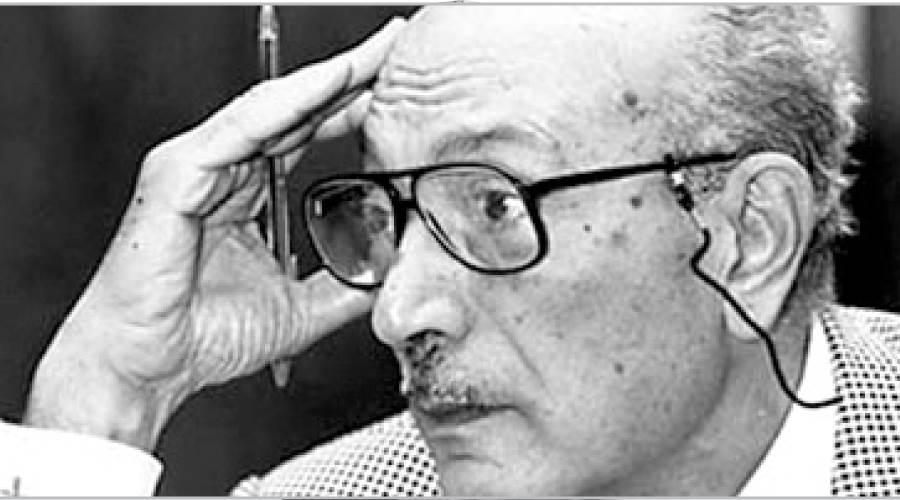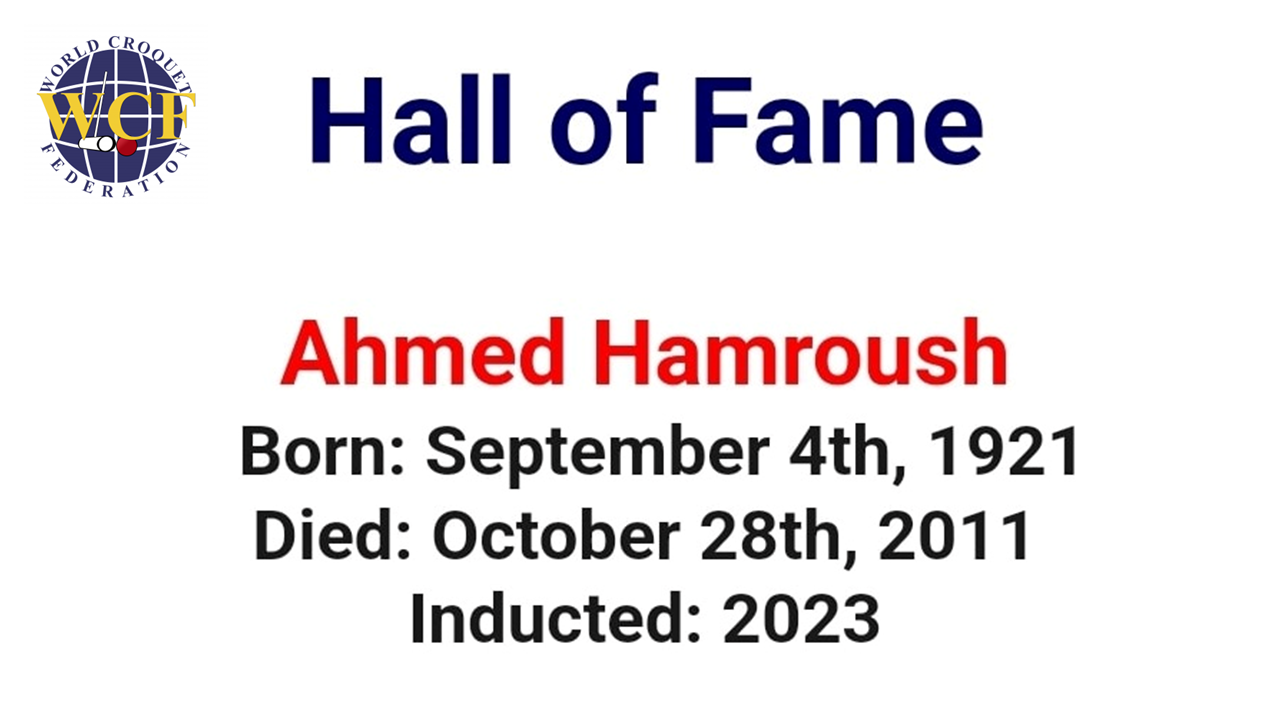

Details
Ahmed Hamroush was an Egyptian intellectual and visionary. He was born in 1921. He graduated from the Egyptian Military College in 1942 and later acquired an advanced military degree at the Egyptian Military Academy in 1953. He was a member of the “Free Officers” Organization that led the 1952 movement. In 1955, he changed career by leaving the military to pursue his passion for writing and journalism. He was chief editor of many Egyptian newspapers and weekly magazines and was a regular columnist. He authored books and articles with special focus on modern Egyptian history, particularly the July 1952 revolution of which he was considered one of its most prominent historians. He published 25 books in politics, arts and literature. He was elected as secretary general of the Egyptian Committee for Afro-Asian Solidarity and president of the Egyptian Organization for Solidarity. He continued to be productive until he passed in 2011. Hamroush’s love for croquet was sparked sometime in the late 50s when he and his wife Fawzia watched the game from the balcony of their Alexandria apartment that overlooked the croquet courts of Sporting Club. They both became fascinated by the game and decided to take it up as a hobby. It did not take long before they became highly competitive players. So competitive that Ahmed won the Egyptian national championship in singles in 1965. Up until that time, croquet was exclusively played in elite clubs and was predominantly played in a social and friendly fashion without a governing body. On February 16, 1967, Ahmed Hamroush established the Egyptian Croquet Federation (ECF) and served as its first president, holding this position for many years. As a visionary, he felt the game needs to be organized like an advanced sport requiring established rules, regulations and governance protocols. Under his leadership, the ECF formalized 5 national championships in men’s singles, ladies’ singles, men’s doubles, ladies’ doubles and mixed doubles. In addition, the ECF established a well-designed club league that allowed teams to compete in home-and-home events competing in five matches in men and women’s singles, doubles and mixed doubles. This brilliant design allowed equal representation of men and women on every team. Something that we rarely see today in national or international team competitions, which is a testament to Hamroush’s progressive and forward thinking. Hamroush believed that the mission of the ECF should be to remove barriers to participating in croquet. He refused the notion that croquet is an elitist game. He diligently worked on ensuring that every club had at least one croquet court. He was most proud of his efforts to help build a court at the Sugar Factory Club (Hawamdeya). This club not only competed in the club league but also produced national champions. Hamroush would have been immensely proud to see Fawzy Abdel Gayed reach the final of the WCF under 21 world championship earlier this year (February 2023). Fawzy is the most recent product of Hawamdeya following the footsteps of his father and grandfather. Another barrier-breaking endeavor was building 3 croquet courts under the management of the Egyptian Federation to provide a venue for anyone interested in playing croquet, particularly those who have no access to a croquet court or cannot afford a club membership. Under Hamroush’s leadership, Egyptian Golf Croquet (GC) became the game that captured the world’s attention. It was the sophisticated rules that allowed Egyptians to excel and become the accurate shooters and great tacticians of the game. And this is what impressed the late Chris Hudson (WCF HOF 2020-Posthumously). Hamroush and Hudson formed a bond rooted in the love of the game. In 1996 when Hudson visited Egypt and watched the Egyptians play GC, he was mesmerized. This sparked the conversation about Egypt joining the WCF. It was Hamroush’s vision to have WCF GC world championships. Despite the disparity between the advanced Egyptian GC rules and the primitive WCF GC rules at the time, Hamroush wisely agreed to play the first world championship in 1996 under the WCF rules. He managed to convince Hudson and the WCF to allow Egypt to host the next world championship in 1997 and to play the event under the Egyptian rules. He provided a translation of the Egyptian rules, which was distributed to the non-Egyptian participants. The event was a big hit and the players at the end of the tournament voted to request that the WCF adopts the Egyptian rules as the official WCF rules. This resulted in the formation of the first WCF Golf Croquet Rules Working Party (1) that drafted the GC rules, which is the version that is being played today with minor modifications. The growth of GC across the world would not have happened without the work of Ahmed Hamroush. His passion for organization and his diligent efforts in creating a well-designed system that rewarded skills, created a highly entertaining and spectator-friendly version of the croquet. Golf Croquet was transformed from an introductory game to Association Croquet into a game that stands on its own as a formidable alternative. In America and other parts of the world we see clubs that play GC exclusively. Other clubs that struggled in the past to recruit new members are now trying to add courts to keep up with new players attracted by GC. The world had GC for many years, but it was Egypt’s joining the WCF that resulted in GC’s transformation into this attractive and spectacular version. This was eloquently stated in Chris Hudson’s Hall of Fame citation. “In 1996, Chris met General Ahmed Hamroush, the President of the Egyptian Croquet Federation. As a result, Egypt joined the World Croquet Federation, the world was shown a whole new way to play GC and the first GC World Championship was held in Italy in that year.” Ahmed Hamroush deserves to be recognized for his lifetime work. Although he is no longer with us, his recognition posthumously means that the croquet world remembers his contribution and honors his memory. Inducting Mr. Hamroush into the WCF Hall of Fame will send a heartwarming message of love and gratitude to his family and the Egyptian croquet community that he is not forgotten and that his efforts are leaving an everlasting mark even after his passing.